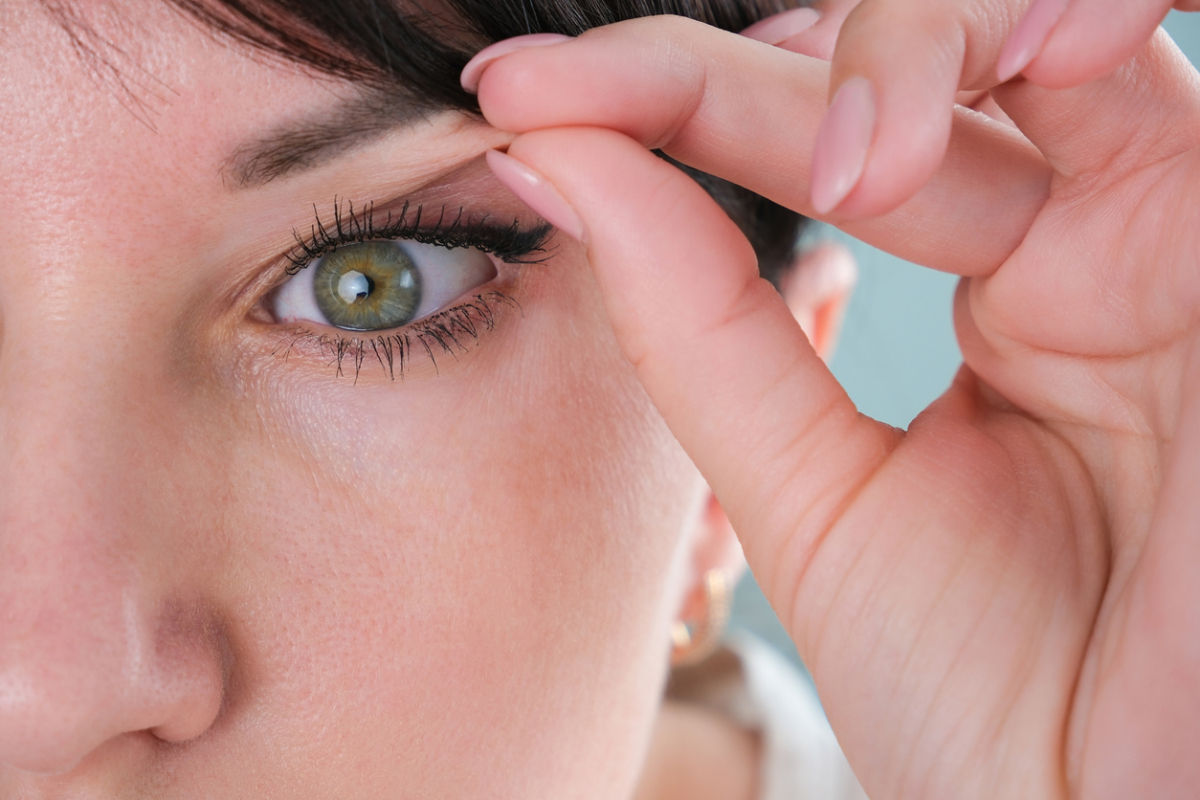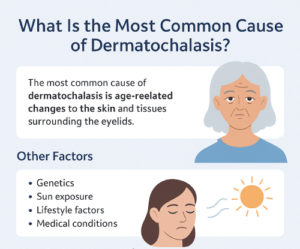Have you noticed heavy, sagging eyelids that make your eyes look and feel weighted, perhaps even dragging down on your other features? If so, you might be dealing with dermatochalasis. But what is the most common cause of dermatochalasis? While this condition can develop for different reasons, the most frequent culprit is the natural aging process, which inherently leads to a gradual loss of skin elasticity and support around the eyes.
Understanding why it happens and what you can do about it can help you determine whether to consider professional dermatochalasis treatment.
What Is the Most Common Cause of Dermatochalasis?
The most common cause of dermatochalasis is age-related changes to the skin and tissues surrounding the eyelids. Over time, the skin around your eyes naturally becomes thinner and loses collagen, elastin, and fat. The muscles that support the eyelids can weaken, and the underlying connective tissue can stretch. Together, these changes create extra folds of loose, hanging skin on the upper or lower eyelids.
While aging is the primary cause, other factors can make the condition more noticeable or accelerate its development:
- Genetics – Some people are more prone to developing excess eyelid skin at an earlier age due to inherited traits.
- Sun exposure – UV damage breaks down collagen more quickly, accelerating skin laxity.
- Lifestyle factors – Smoking, stress, and poor skin care can contribute to premature changes in skin quality.
- Underlying medical conditions – Certain issues, such as thyroid eye disease, can cause the eyelids to appear heavier or more stretched over time.
Even though dermatochalasis is often considered a cosmetic concern, it can also impact vision if the excess skin begins to droop into your line of sight.
How Do You Know When Dermatochalasis Needs Treatment?
For some, dermatochalasis is simply a mild aesthetic issue, creating a tired or aged look. For others, sagging skin can make reading, driving, or other daily tasks more challenging by partially obstructing vision. You may want to seek professional evaluation if:
- The skin of your upper eyelids hangs over your lashes.
- You notice forehead strain or frequently lifting your brow to see clearly.
- Your eyes feel heavy or tired by the end of the day.
- Your appearance feels less alert or youthful than you’d like.
In these cases, treatment can improve not just appearance but also function, helping your eyes feel and work better throughout the day.
What Are the Most Common Dermatochalasis Treatments?
Treatment typically involves a surgical procedure called blepharoplasty, performed by a specialized oculoplastic surgeon (like our very own Dr. McCracken!) This procedure removes excess skin and, when necessary, adjusts underlying fat or muscle to restore a natural, refreshed eyelid contour. Because oculoplastic surgeons have advanced training in both the functional and cosmetic aspects of eyelid surgery, they can make sure that your results look seamless while supporting proper eyelid function.
While surgery is the definitive solution, some patients also benefit from nonsurgical treatments, such as laser resurfacing or skin-tightening procedures, to address early, mild changes. A personalized consultation can help determine which approach is best suited to your needs and goals.
Why Choose an Oculoplastic Surgeon for Dermatochalasis Care?
The eyelids are among the most delicate and complex structures of the face. Treating dermatochalasis safely and effectively requires more than general plastic surgery experience. An oculoplastic surgeon is specifically trained to protect your vision while enhancing the appearance and comfort of your eyelids, making them the ideal choice for this type of treatment.
Schedule Your Dermatochalasis Consultation Today
If drooping eyelids are affecting your appearance or vision, McCracken Eye & Face can help. Schedule a consultation with our skilled oculoplastic surgeons to explore dermatochalasis treatment options designed to restore your comfort, vision, and confidence.




